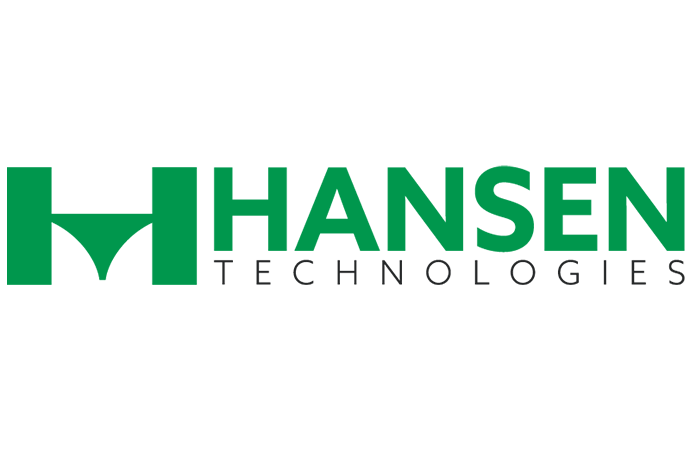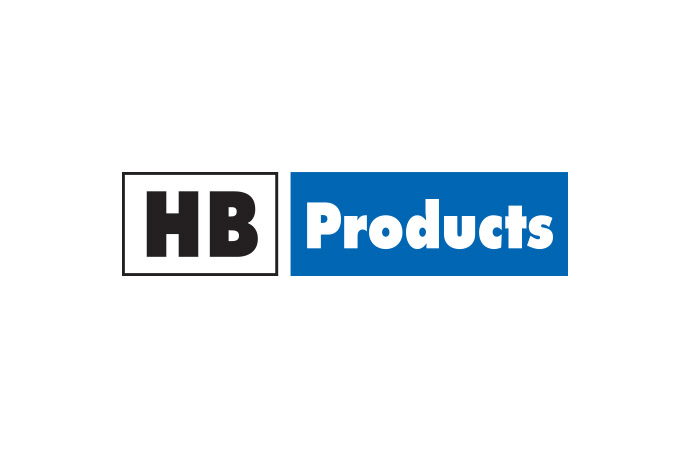A project team working on an ammonia based indoor ski resort in Dubai resorted to self-regulation in order to prove to the local authorities that public safety would not be compromised. Mr Ali Sleiman, Director of engineering services company EN3 - The Three Factors Company, shares his experience from this project and discusses the suitability of ammonia in district cooling in the Middle East.

ammonia21.com: You recently gave a presentation at an event in Dubai dedicated to refrigerants on ADC involvement and experience in the ammonia refrigeration plant for the Ski Dubai project, the first indoor ski resort in the Middle East that opened in 2006. What led to the selection of ammonia for this project?
Ali Sleiman: ADEAREST, the local contractor I used to work for, was involved in the project. Every project has its set of givens, be it choices or restrictions. For Ski Dubai, the choice of ammonia came from two basic facts: First, the temperatures required by the process (-15 to -18°C) are best served with ammonia. Secondly, the end-user is making a commercial use of the direct use of the refrigeration equipment, i.e. use of efficient equipment minimises the running cost of the resort, mainly electric power.
ammonia21.com: Has the system performance met expectations?
Sleiman: By far, the system met all the expectations. The use of industrial grade equipment, which is the norm for ammonia systems, translated into a stable system, capable of delivering the design parameters and more. During the commissioning, we were producing up to 90 tons of snow, assisted with auxiliary cooling. The system was designed to produce 30 tons a day. We were running against time as the opening date of the mall in which the ski resort was located was already announced. After the opening, the system was put in stable operation.
ammonia21.com: How challenging was it, if at all, to get go ahead permission for the use of ammonia from the local authorities?
Sleiman: The lack of regulations forced the project team to go into a mode of self-regulation, which at times can be more stringent than a prescribed set of rules. The United Arab Emirates (UAE), at the time and even today, has not published a set of standards for the use of ammonia. Hence, the team of designers and contractors relied on the U.S. EPA regulations to study the effect of using ammonia in an urban setting. The study was submitted to the local building authority. The authority needed to know that public safety was not compromised. The Dubai Civil Defense (fire brigade) was informed of the presence of ammonia on this site. We received assurance that the firemen are trained to deal with ammonia emergency. Last, we had to assure the owner and operators of the resort that the system is safe.
ammonia21.com: What are the features that ensure safety and what is the experience with servicing/maintaining the system?
Sleiman: There are several features that were put in place to ensure safety:
ammonia21.com: The International District Energy Association (IDEA) estimates that the rapid rate of construction in the Middle East could generate demand for 10-20 million Tons of Refrigeration (TR). The same organisation estimates that the development of the Middle East district cooling sector will outpace North America’s by a ratio of 2:1.
Would you say that district cooling using ammonia refrigerant could be a promising solution for energy saving in the Gulf region, as the interest in refrigerants that provide high efficiencies whilst not damaging the environment increase?
Sleiman: Definitely, there is an interest to use ammonia refrigerant in large scale cooling projects. The market for large capacity chillers is there. However many obstacles are in the way, and one has to reflect on what was going on during the "boom years". Clients were asking for complete plant rooms to be ready in 14 and 16 months. Delivery of large compressors or chiller skids requires a production line that is only available with air-conditioning machines. Another aspect is the scalability of compressors.
ammonia21.com: Is ammonia technology used in any of the district cooling projects that ADC has been involved with so far? Is ammonia among the refrigerants that you consider for the future?
Sleiman: Whilst centrifugal compressors used for other refrigerants (R134a and R123) can be scaled up to 2500 TR and even 5,000 TR with the new Siemens machine, screw compressors can barely reach their limits of 2000 TR. Screw compressors are good for a high lift, but they are positive displacement machines and this means that they cannot lend themselves to large swept volumes that the centrifugal compressor can do. The cost per ton of refrigeration in district cooling application is very low, and this also steers the choice towards commercial machines to be used.
Still, in some instances, the case for ammonia is not lost. There are applications where ice storage is required by the type of application, and this can shift the choice towards ammonia, as compared to any other refrigerant.
The day has to come when people pay refrigerant tax based on refrigerant used and its total equivalent carbon emission; only then the case for natural refrigerants can be won.
ammonia21.com: Where do you see the main opportunities but also the barriers to expanding the use of ammonia in the Middle East?
Sleiman: Some ideas that come to mind when thinking of ammonia can be:
Ali Sleiman: ADEAREST, the local contractor I used to work for, was involved in the project. Every project has its set of givens, be it choices or restrictions. For Ski Dubai, the choice of ammonia came from two basic facts: First, the temperatures required by the process (-15 to -18°C) are best served with ammonia. Secondly, the end-user is making a commercial use of the direct use of the refrigeration equipment, i.e. use of efficient equipment minimises the running cost of the resort, mainly electric power.
ammonia21.com: Has the system performance met expectations?
Sleiman: By far, the system met all the expectations. The use of industrial grade equipment, which is the norm for ammonia systems, translated into a stable system, capable of delivering the design parameters and more. During the commissioning, we were producing up to 90 tons of snow, assisted with auxiliary cooling. The system was designed to produce 30 tons a day. We were running against time as the opening date of the mall in which the ski resort was located was already announced. After the opening, the system was put in stable operation.
ammonia21.com: How challenging was it, if at all, to get go ahead permission for the use of ammonia from the local authorities?
Sleiman: The lack of regulations forced the project team to go into a mode of self-regulation, which at times can be more stringent than a prescribed set of rules. The United Arab Emirates (UAE), at the time and even today, has not published a set of standards for the use of ammonia. Hence, the team of designers and contractors relied on the U.S. EPA regulations to study the effect of using ammonia in an urban setting. The study was submitted to the local building authority. The authority needed to know that public safety was not compromised. The Dubai Civil Defense (fire brigade) was informed of the presence of ammonia on this site. We received assurance that the firemen are trained to deal with ammonia emergency. Last, we had to assure the owner and operators of the resort that the system is safe.
ammonia21.com: What are the features that ensure safety and what is the experience with servicing/maintaining the system?
Sleiman: There are several features that were put in place to ensure safety:
- The plant room was designed to meet the ASHRAE 15 machine room safety. A similar standard is published by the IIAR.
- Ammonia is restricted to the mechanical room and a glycol solution (anti-freeze) is used to circulate in the snow dome.
- Full refrigerant recovery to the low pressure vessel.
- Full connectivity to a remote control room.
- Safety Personal Protective Equipment (PPE) are present at all times.
ammonia21.com: The International District Energy Association (IDEA) estimates that the rapid rate of construction in the Middle East could generate demand for 10-20 million Tons of Refrigeration (TR). The same organisation estimates that the development of the Middle East district cooling sector will outpace North America’s by a ratio of 2:1.
Would you say that district cooling using ammonia refrigerant could be a promising solution for energy saving in the Gulf region, as the interest in refrigerants that provide high efficiencies whilst not damaging the environment increase?
Sleiman: Definitely, there is an interest to use ammonia refrigerant in large scale cooling projects. The market for large capacity chillers is there. However many obstacles are in the way, and one has to reflect on what was going on during the "boom years". Clients were asking for complete plant rooms to be ready in 14 and 16 months. Delivery of large compressors or chiller skids requires a production line that is only available with air-conditioning machines. Another aspect is the scalability of compressors.
ammonia21.com: Is ammonia technology used in any of the district cooling projects that ADC has been involved with so far? Is ammonia among the refrigerants that you consider for the future?
Sleiman: Whilst centrifugal compressors used for other refrigerants (R134a and R123) can be scaled up to 2500 TR and even 5,000 TR with the new Siemens machine, screw compressors can barely reach their limits of 2000 TR. Screw compressors are good for a high lift, but they are positive displacement machines and this means that they cannot lend themselves to large swept volumes that the centrifugal compressor can do. The cost per ton of refrigeration in district cooling application is very low, and this also steers the choice towards commercial machines to be used.
Still, in some instances, the case for ammonia is not lost. There are applications where ice storage is required by the type of application, and this can shift the choice towards ammonia, as compared to any other refrigerant.
The day has to come when people pay refrigerant tax based on refrigerant used and its total equivalent carbon emission; only then the case for natural refrigerants can be won.
ammonia21.com: Where do you see the main opportunities but also the barriers to expanding the use of ammonia in the Middle East?
Sleiman: Some ideas that come to mind when thinking of ammonia can be:
- General perception of natural refrigerants and in particular for ammonia has to be improved. Case studies for commercial applications in Europe should be publicized and data published.
- Government regulations should be put in place to restrict people from using inefficient refrigerants.
- The tariff for electricity is still low, and the efficiency factor does not play a big role in deciding on the refrigerant.
- The application of dual tariff by utility companies in order to minimize electrical networks peak load can shift more users towards ice storage.
- Packaged ammonia chillers are not marketed well in the general construction industry and limited to industrial projects.
MORE INFORMATION
Related stories

_1475587414.png)





_1522327086.png)

